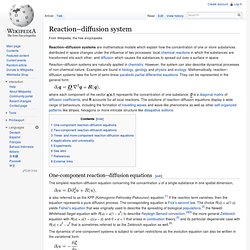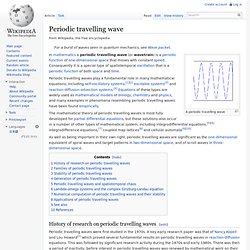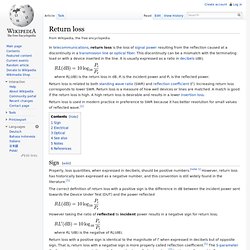

Reaction–diffusion system. Reaction–diffusion systems are mathematical models which explain how the concentration of one or more substances distributed in space changes under the influence of two processes: local chemical reactions in which the substances are transformed into each other, and diffusion which causes the substances to spread out over a surface in space.

Reaction–diffusion systems are naturally applied in chemistry. However, the system can also describe dynamical processes of non-chemical nature. Examples are found in biology, geology and physics and ecology. Periodic travelling wave. A periodic travelling wave Periodic travelling waves play a fundamental role in many mathematical equations, including self-oscillatory systems,[1][2] excitable systems[3] and reaction-diffusion-advection systems.[4] Equations of these types are widely used as mathematical models of biology, chemistry and physics, and many examples in phenomena resembling periodic travelling waves have been found empirically.

The mathematical theory of periodic travelling waves is most fully developed for partial differential equations, but these solutions also occur in a number of other types of mathematical system, including integrodifferential equations,[5][6] integrodifference equations,[7] coupled map lattices[8] and cellular automata[9][10] Return loss. Where RL(dB) is the return loss in dB, Pi is the incident power and Pr is the reflected power.

Return loss is related to both standing wave ratio (SWR) and reflection coefficient (Γ). Increasing return loss corresponds to lower SWR. Return loss is a measure of how well devices or lines are matched.